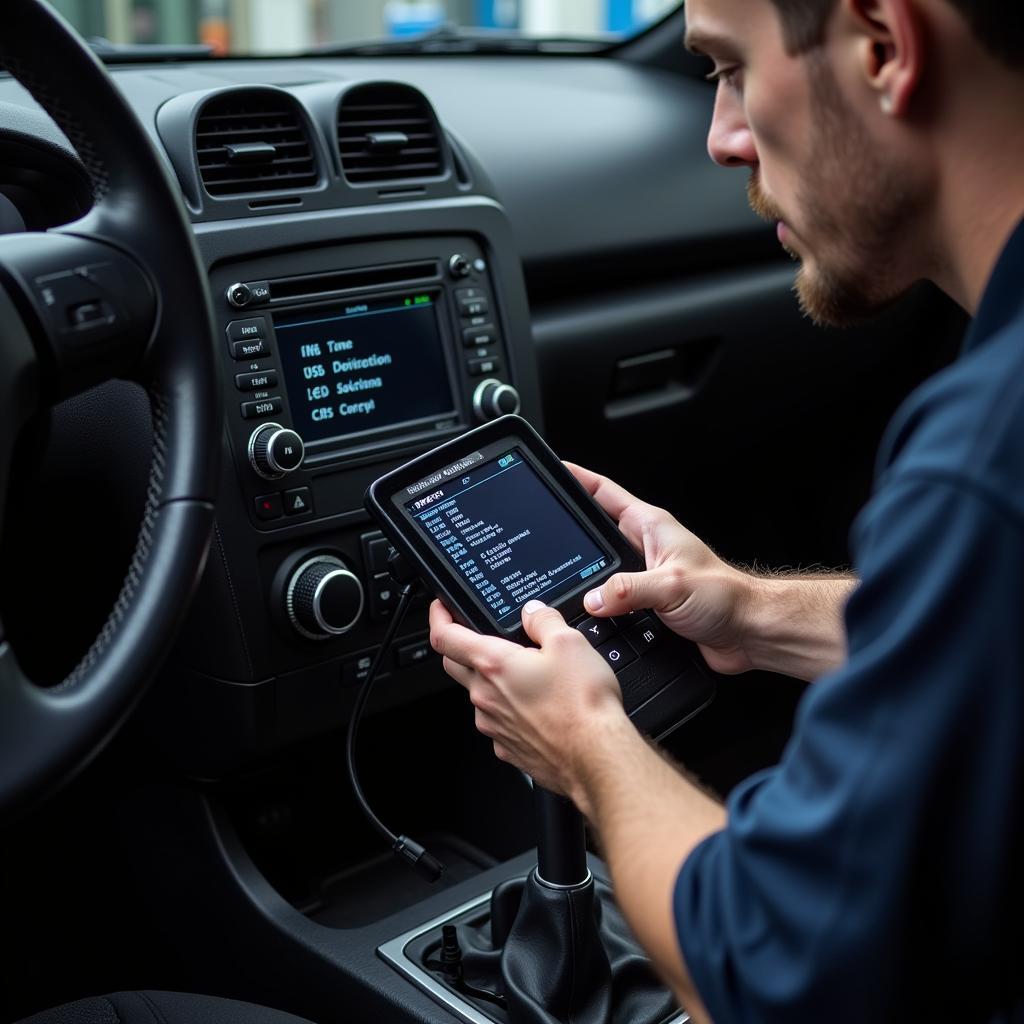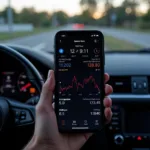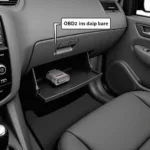One of the most common issues car owners face with their OBD2 scanners is the dreaded “oxygen sensor not ready” message. This message indicates that your vehicle’s engine control unit (ECU) hasn’t gathered enough data from the oxygen sensor to determine if it’s functioning correctly. While this might seem daunting, understanding the causes and solutions can help you quickly get back on the road.
What Does “OBD2 Oxygen Sensor Not Ready” Mean?
Your car’s oxygen sensors, also known as O2 sensors, play a crucial role in maintaining optimal engine performance and fuel efficiency. These small sensors measure the oxygen content in your vehicle’s exhaust stream and relay this information to the ECU. The ECU uses this data to adjust the air-fuel mixture, ensuring efficient combustion and minimal emissions.
When you see “OBD2 oxygen sensor not ready,” it means the ECU hasn’t had enough time or data to complete its diagnostic checks on the oxygen sensor. This usually happens after a recent repair involving the oxygen sensor, ECU reset, or battery disconnection.
Common Causes of an OBD2 Oxygen Sensor Not Ready Status
Several factors can contribute to an OBD2 oxygen sensor not ready status. Here are some of the most frequent culprits:
- Recent Oxygen Sensor Replacement: After replacing a faulty oxygen sensor, the ECU needs time to recalibrate and gather data from the new sensor.
- ECU Reset or Battery Disconnection: Disconnecting the battery or resetting the ECU clears the stored data, including the oxygen sensor readings. The ECU needs to run through its drive cycle to collect this data again.
- Faulty Oxygen Sensor: A malfunctioning oxygen sensor might not send accurate readings to the ECU, preventing it from reaching a “ready” state.
- Wiring Issues: Damaged or corroded wires in the oxygen sensor circuit can disrupt the communication between the sensor and the ECU.
- Exhaust Leaks: Leaks in the exhaust system before the oxygen sensor can introduce outside air, affecting the sensor readings and causing an incomplete diagnostic cycle.
- Faulty ECU: In rare cases, a malfunctioning ECU might not be able to communicate with the oxygen sensor properly.
How to Fix an OBD2 Oxygen Sensor Not Ready Status
Before attempting any fixes, it’s essential to ensure the problem isn’t a simple case of the ECU needing more time to complete its checks. Here’s a step-by-step guide to address the “OBD2 oxygen sensor not ready” issue:
-
Complete a Drive Cycle: A drive cycle is a specific set of driving conditions that allow the ECU to complete its diagnostic tests. Refer to your vehicle’s repair manual for the recommended drive cycle procedure.
-
Check for Error Codes: If the issue persists after completing a drive cycle, use an OBD2 code reader for iphone to check for specific error codes. These codes provide valuable insights into the underlying problem.
 Using an OBD2 Scanner for Diagnostics
Using an OBD2 Scanner for Diagnostics
-
Inspect the Oxygen Sensor: Visually inspect the oxygen sensor for any signs of damage, such as cracks, burns, or loose connections.
-
Check for Wiring Issues: Examine the wiring harness connected to the oxygen sensor for any fraying, corrosion, or damage.
-
Inspect for Exhaust Leaks: Look for any holes, cracks, or loose connections in the exhaust system, especially near the oxygen sensor.
-
Consult a Mechanic: If you’re unable to pinpoint the cause or fix the issue yourself, it’s best to consult a qualified mechanic for further diagnosis and repair.
Frequently Asked Questions (FAQs)
Q1: How long does it take for an oxygen sensor to be ready?
It can take anywhere from a few minutes to a few hours of driving for an oxygen sensor to become ready, depending on the vehicle and the specific driving conditions.
Q2: Can I drive my car with an “oxygen sensor not ready” message?
While you can technically drive with this message, it’s not recommended for extended periods. Driving with a potentially faulty oxygen sensor can decrease fuel efficiency, increase emissions, and potentially damage your catalytic converter.
Q3: Can I fix an oxygen sensor myself?
Replacing an oxygen sensor can be a DIY job if you have some mechanical skills and the right tools. However, diagnosing the root cause of the “not ready” status often requires specialized equipment and knowledge.
“Diagnosing oxygen sensor issues can be tricky,” says John Smith, Senior Automotive Engineer at XYZ Auto. “It’s always best to use a high-quality OBD2 scanner and consult a professional if you’re unsure about any steps.”
Q4: How much does it cost to fix an oxygen sensor?
The cost of fixing an oxygen sensor problem can vary depending on the make and model of your vehicle, labor costs, and the specific issue. A replacement oxygen sensor itself can range from $20 to $200, while labor costs can add another $50 to $200.
Q5: Can a bad catalytic converter cause an oxygen sensor not ready message?
While a failing catalytic converter can trigger other error codes, it’s less likely to directly cause an “oxygen sensor not ready” message. However, a severely damaged catalytic converter might indirectly affect the oxygen sensor readings.
Conclusion
Encountering an “OBD2 oxygen sensor not ready” message can be frustrating. However, by understanding the potential causes and following the troubleshooting steps outlined in this article, you can often resolve the issue yourself or seek professional help when necessary. Remember to prioritize your car’s health by addressing this issue promptly to ensure optimal engine performance, fuel efficiency, and minimal emissions.
For those looking to delve deeper into OBD2 diagnostics, check out our in-depth reviews of the vGate iCar Pro BLE 4.0 OBD2 scanner and the versatile ELM327 OBD2 Bluetooth diagnostic tool. These tools empower car owners with the knowledge and capabilities to take control of their vehicle’s health.
Have you encountered other issues with your OBD2 scanner or need help locating your OBD2 port? Check out our comprehensive guides, including one specifically for the 99 Subaru Legacy GT OBD2 port location, to find the information you need.
If you’re looking for an advanced OBD2 scanner that also offers key fob programming capabilities, our guide on OBD2 scanners with key fob programming will provide you with valuable insights and recommendations.
For any further assistance or inquiries, feel free to reach out to our dedicated customer support team via WhatsApp: +1(641)206-8880, Email: [email protected]. We are available 24/7 to assist you with all your OBD2 and car diagnostic needs.

